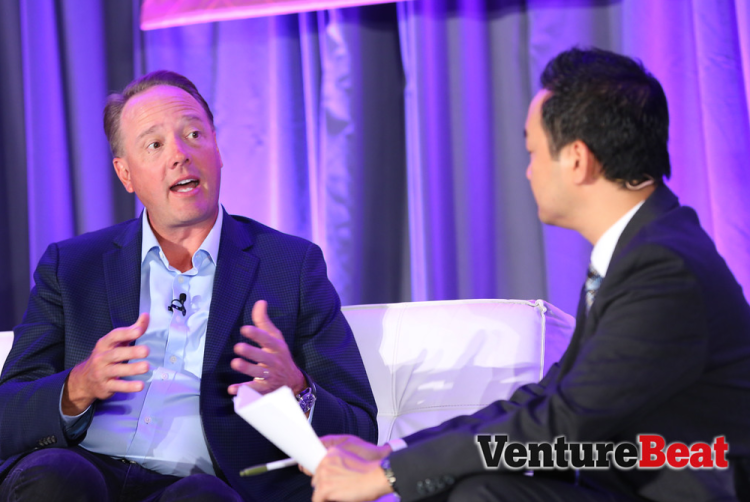Sometimes you have to take something apart in order to figure out how it works — even one of gaming’s most important tradeshows of the year.
The identity of the next Electronic Entertainment Expo lies in picking apart the previous show, Entertainment Software Association chief Mike Gallagher noted at our GamesBeat 2014 conference earlier this week in San Francisco. This involves assessing what worked and putting the expo back together using this postmortem knowledge.
Even though the ESA has long been synonymous with console and PC gaming, one of the key factors in the organization’s growth is in tracking the rise of the mobile market and the distribution of smartphones. He also mentioned the strong possibility of creating a pavilion at catered directly to mobile gaming at next year’s E3.
At his most insightful, Gallagher stressed the value of IARC (International Age Rating Coalition), widely considered the ESRB of digital games (and most notably, mobile apps). His fondness for the young organization stems from the easy-to-use, fiction-free filing process for any given app. Furthermore, IARC’s classification process utilizes an algorithm that addresses culture concerns in a given market or country. For example, games available in the U.S. would make special note of sexual content where applicable; for Europe, it would be violence; for South Korea, it would be gambling. Gallagher was also sure to namedrop the ESRB and the FTC as key domestic partners who have great relationships with the ESA.
When asked about the console gaming market in the immediate future, Gallagher was wholeheartedly excited about this holiday season and early next year, “You’ve never seen a pipeline so rich as you’ll see in the next 6 months.” He noted that it’s a string of games that starts with Destiny, which exemplifies the growth of engaging games that are also social.
In terms of achievements in recent years, Gallagher highlighted ESA’s consultancy role with Vice President Joe Biden in the aftermath of the shooting at Newtown and the award-winning public-service announcement that resulted from the consultancy work. Gallagher also touted the ESA’s drive in creating game development jobs in all 50 states, and he sounded aptly unsatisfied with the meager 22 states that currently have such employment opportunities. ESA has also been busy testifying on the DMCA in order to stress the importance of digital ecosystems and have continued to issue take down notices infringing on copyrights. As a voice representing the industry and gamers, the ESA has also filed comments on Net Neutrality.
And Gallagher was rightfully proud of the 49 billion media impressions this year’s E3 generated.
Gallagher noted that the crux of growing internationally is in delivering high-value services quickly. This includes having close, harmonious ties to organizations similar to the ESA in other countries, especially when it comes of have a consistent voice in a given country’s government. Speaking of having an international mindset, he said that it helps tremendously that many companies like Take-Two, Nexon, Wargaming, and a number of Japanese publishers operate like global firms. And while it’s an everyday goal to have harmony among the ESA’s partners, he does acknowledge that there will always be disagreements.
He went on to say that for developers and publishers, the distribution model has never been easier, but getting exposure is still a challenge, thereby stressing the importance of finding good partners.
As the session wrapped up, Gallagher told the audience to never lose sight of focusing on the gamer. “Do not get sharp with your customers. Do not take advantage of your customers.” This is not only for financial success, but also because the government is looking for an excuse blame the video game industry of negative consumer experiences.
For more, check out the Entertainment Software Association’s 2013 Annual Report.
VentureBeat's mission is to be a digital town square for technical decision-makers to gain knowledge about transformative enterprise technology and transact. Learn More

